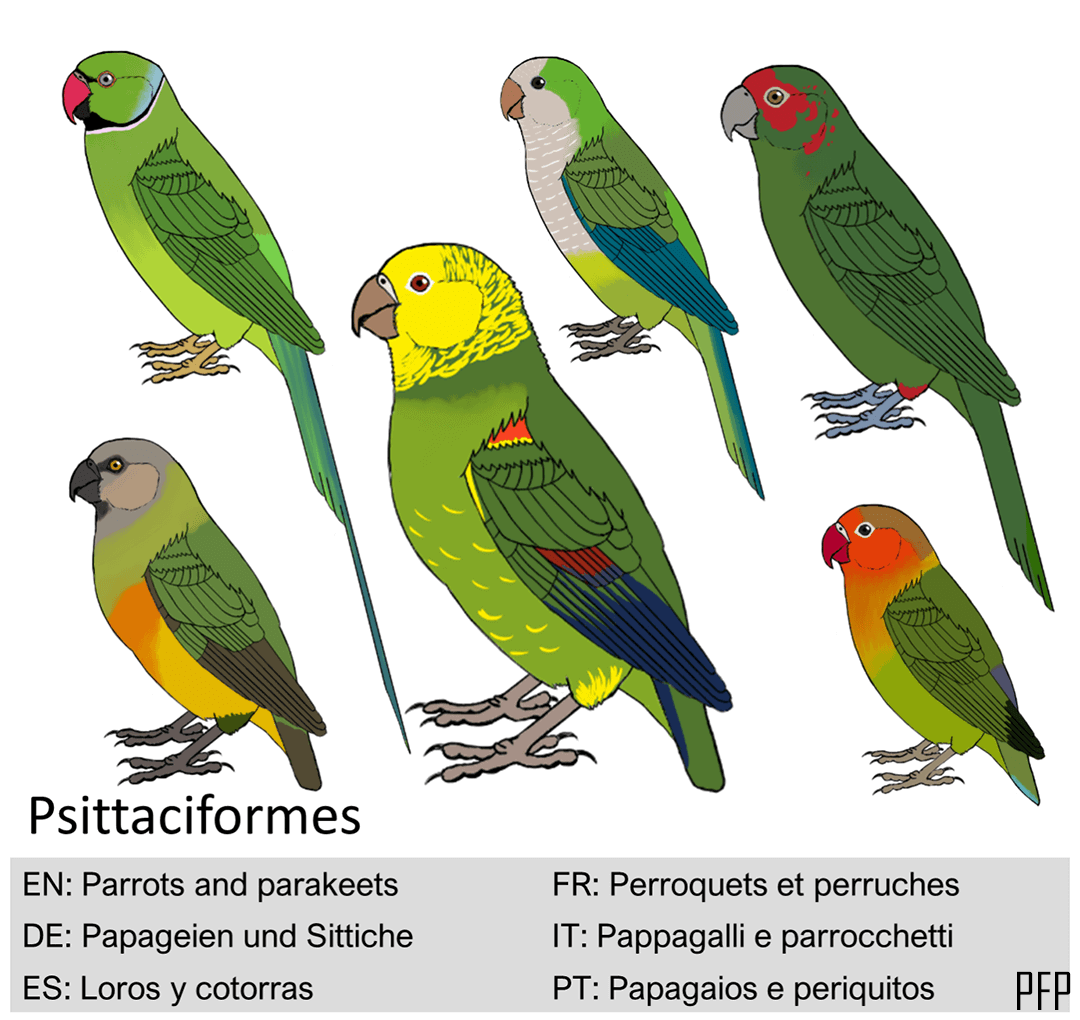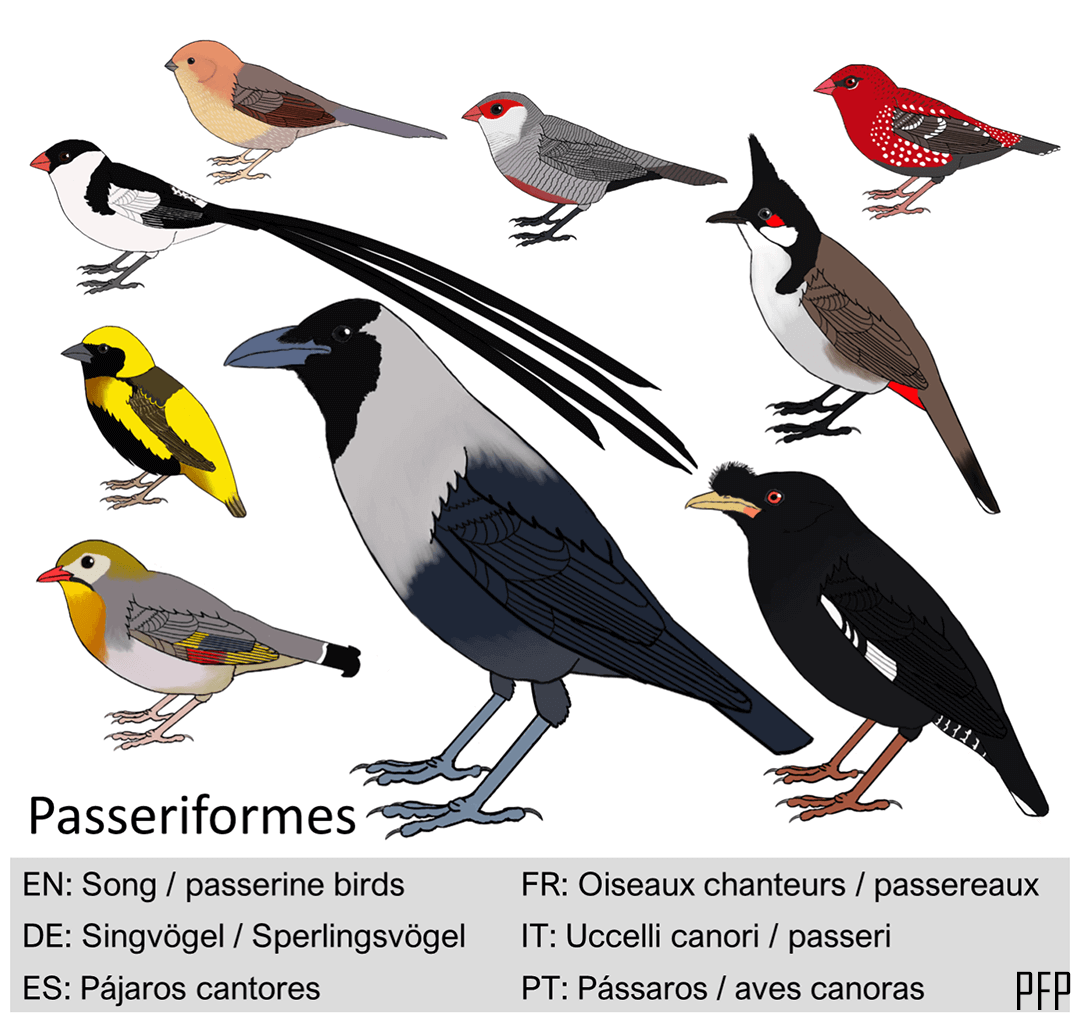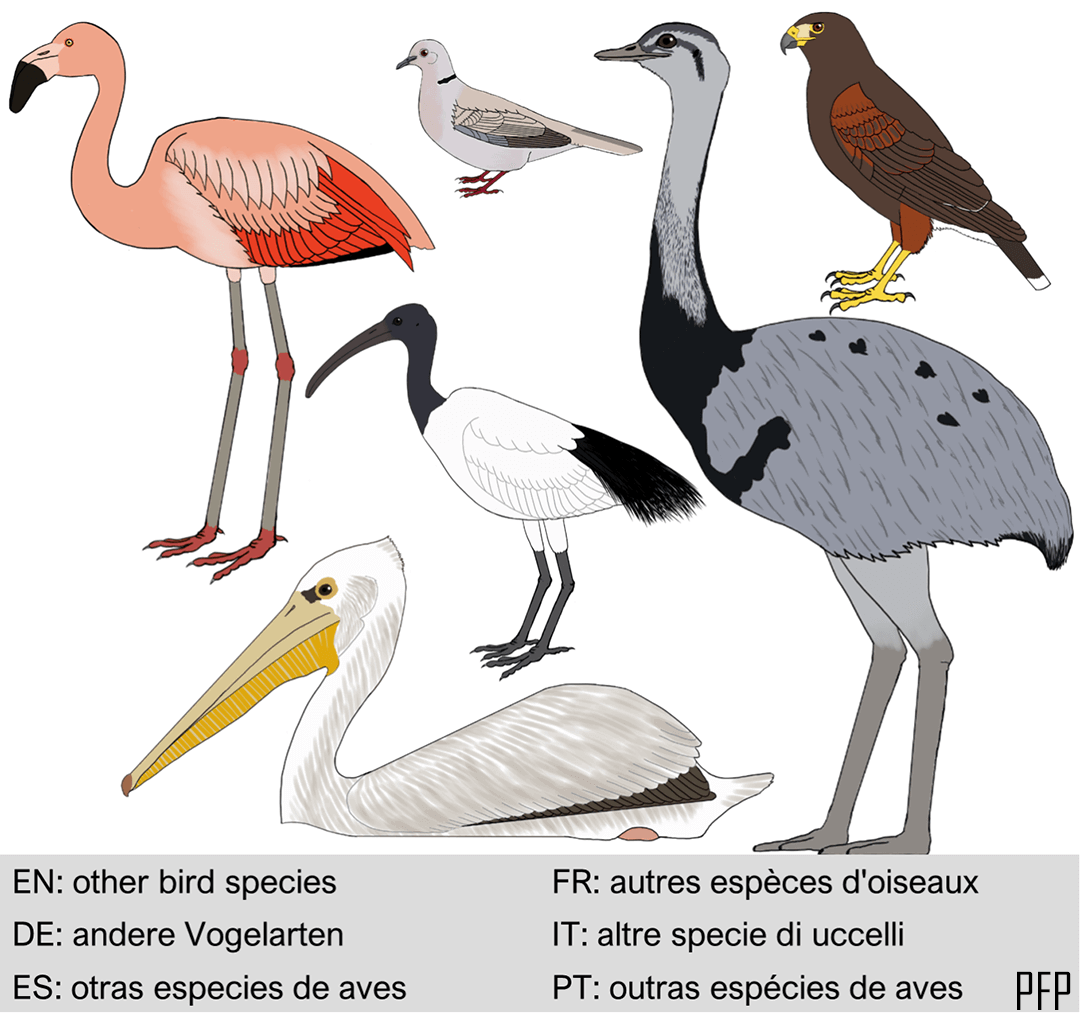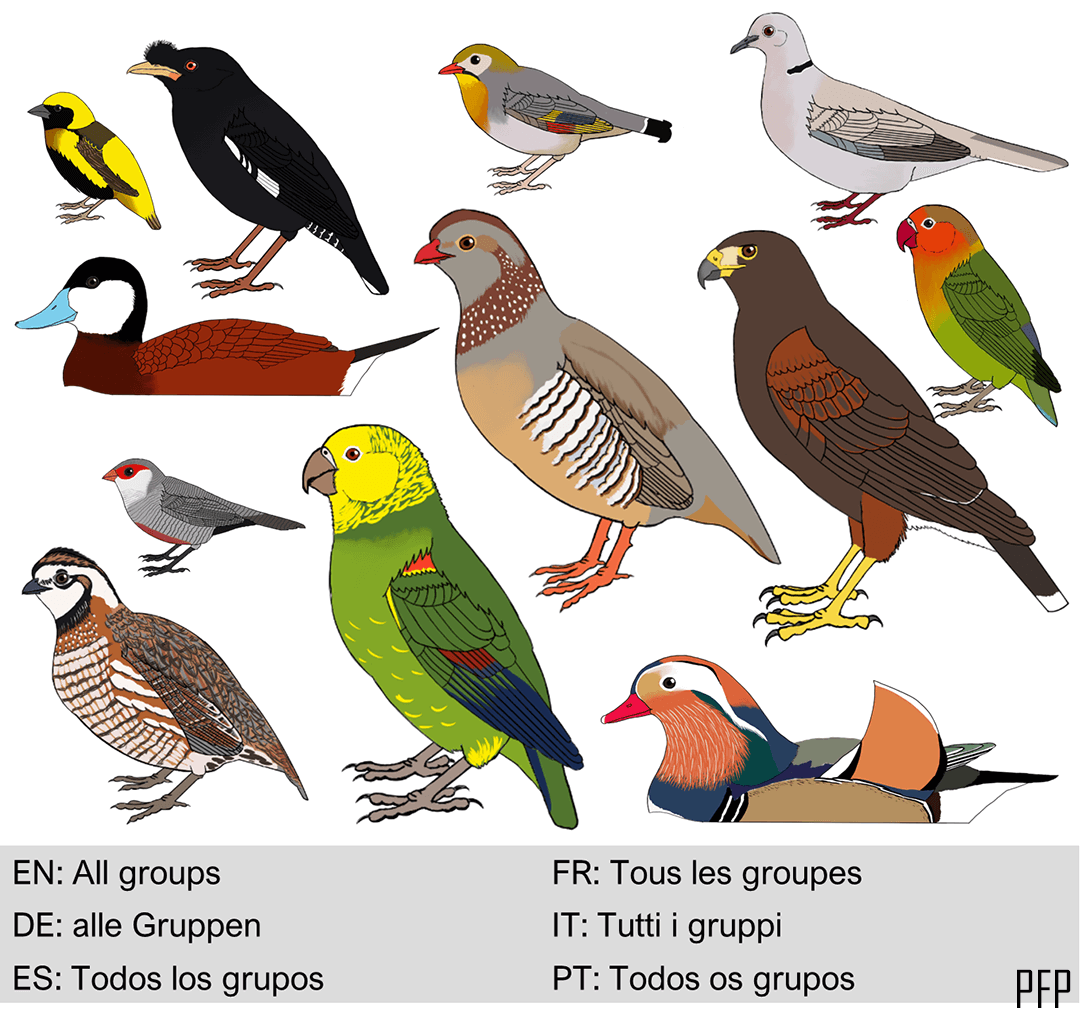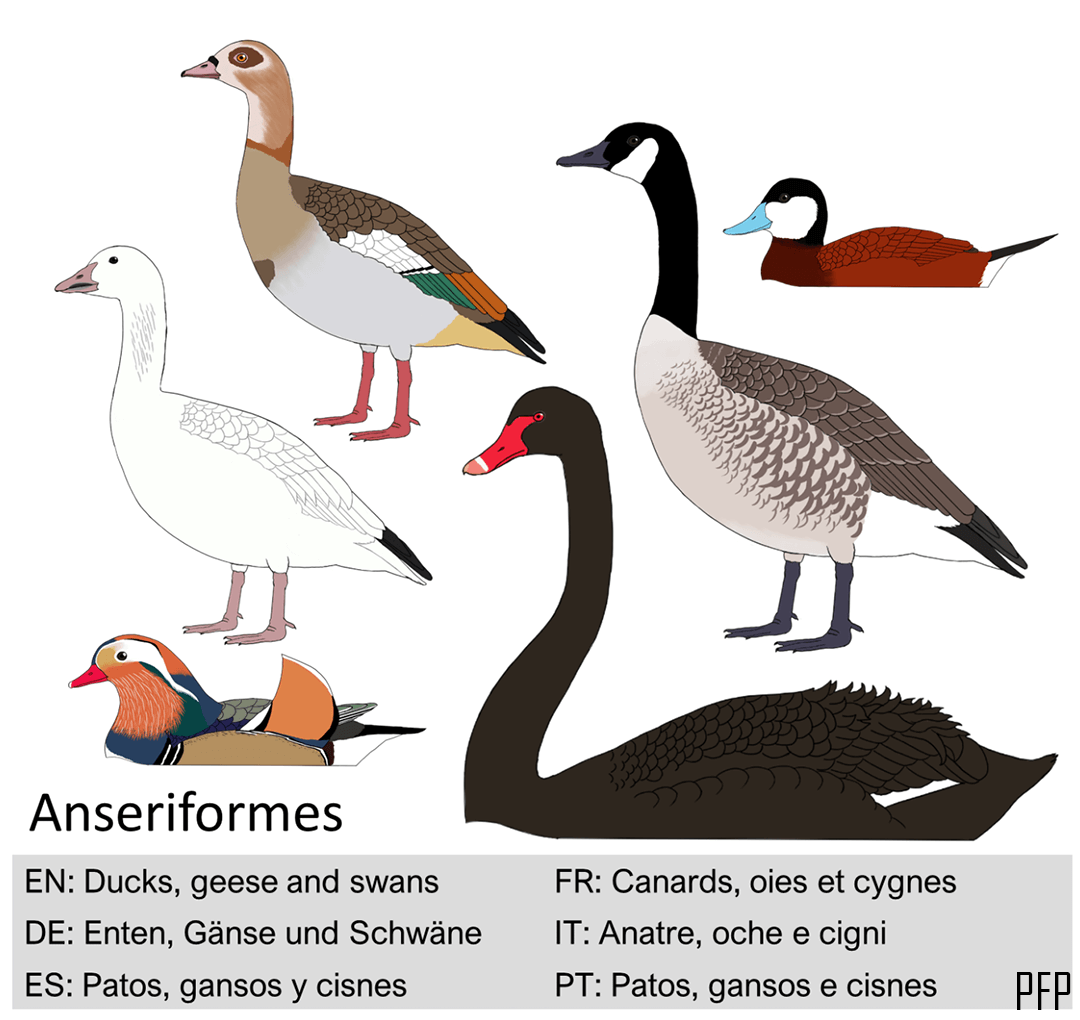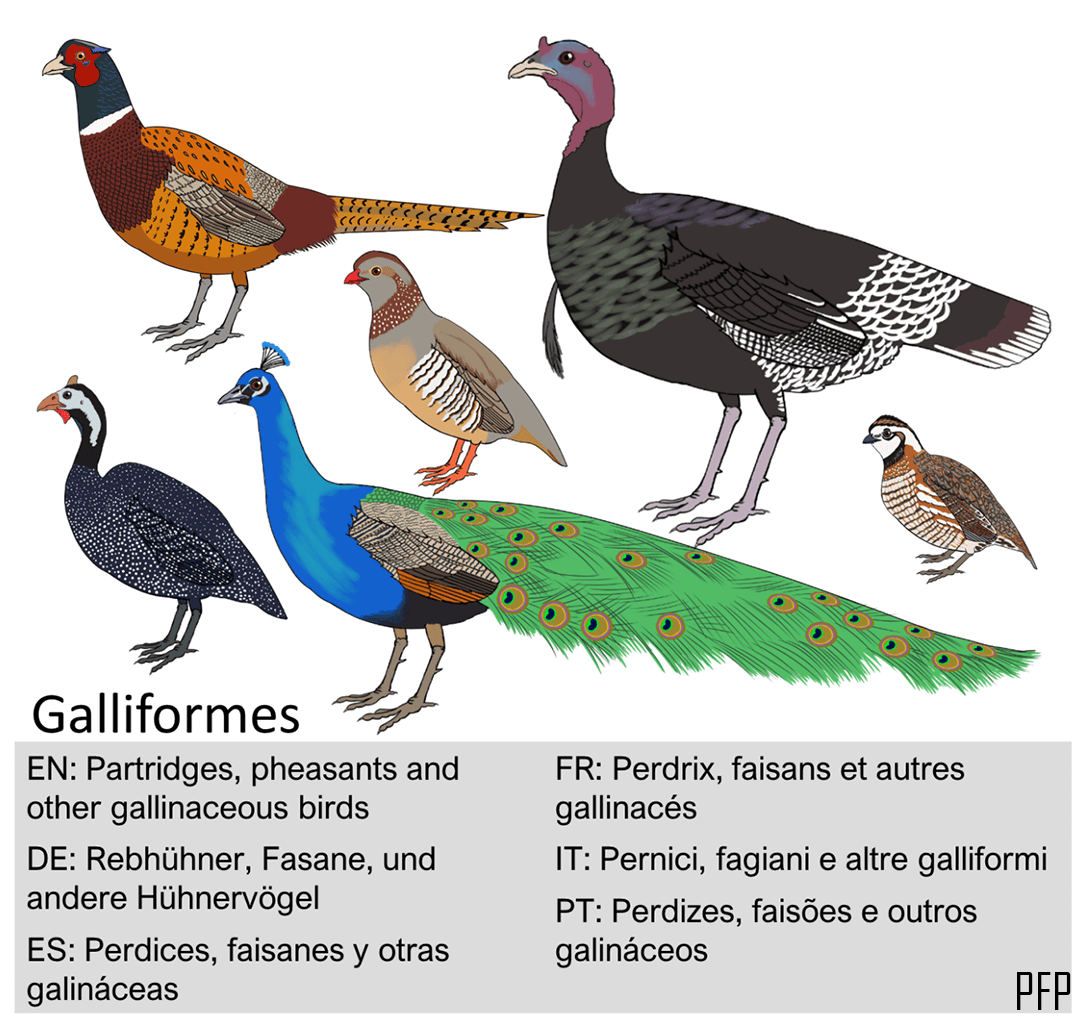IBISURVEY RESULTS
Last updated: 2025-07-04
Number of observations
Participants
Exotic Bird Species
Top 10 reported species
- 523| Ring-necked Parakeet (Psittacula krameri) 22%
- 280| Egyptian Goose (Alopochen aegyptiaca) 12%
- 238| African Sacred Ibis (Threskiornis aethiopicus) 10%
- 172| Red-billed Leiothrix (Leiothrix lutea) 7%
- 159| Canada Goose (Branta canadensis) 7%
- 157| Monk Parakeet (Myiopsitta monachus) 7%
- 91| Mandarin Duck (Aix galericulata) 4%
- 88| Common Waxbill (Estrilda astrild) 4%
- 85| Common Pheasant (Phasianus colchicus) 4%
- 55| Crested Myna (Acridotheres cristatellus) 2%
Interactions for all exotic species
Observations by country
- 606| IT 26%
- 557| PT 24%
- 295| ES 13%
- 227| UK 10%
- 214| FR 9%
- 172| DE 7%
- 64| NL 3%
- 44| CH 2%
- 44| TR 2%
- 24| BE 1%
- 24| PL 1%
- 19| GR 1%
- 10 | RS 0%
- 10 | SE 0%
- 5 | HR 0%
- 5| LU 0%
- 5 | RO 0%
- 4 | AL 0%
- 4 | DK 0%
- 4 | SK 0%
- 3| AT 0%
- 3| ME 0%
- 2| AZ 0%
- 2 | BG 0%
- 2| CZ 0%
- 2 | NO 0%
- 1 | CY 0%
- 1 | FI 0%
- 1| HU 0%
- 1 | IE 0%
- 1 | RU 0%
- 1 | VA 0%
Have you seen an introduced bird in the wild?
What kind of behaviours did you observe?
Birds showed breeding behaviour

Birds showed other behaviours

Submit your observation record!
Submit your observation record!
› with photos: gmail users | other accounts
› without photos
Thank you for your participation!
The project
Introduction
Since ancient times, several species of animals and plants were transported to outside its natural distribution for resources production (e.g., food, wood), hunting or aesthetic purposes. Part of that transportation results in intentional or accidental releases to the wild. The fact that the species is not originally from a country or region makes it exotic or non-native in that new place. A small proportion of such introduced exotic species find suitable conditions to settle and reproduce in the new place and start an establishment process without human support. An even smaller proportion of those established species may become invasive if they increase in numbers and spread beyond the introduction place, which might cause negative impacts on environment, agriculture, human health, or economy.
Challenges
The impact of introduced species is hard to evaluate when data on their distribution, abundance and behaviour are not systematically obtained.
Introduced species may be unfamiliar to most citizens because they are often disregarded in popular bird guides, restricted to a particular region, or might be mistaken for some native species.
Objectives
“Introduced Bird Interaction Survey” (IBISurvey) is a Citizen Science project from the University of Évora (Portugal) with the main objective of assessing the environmental, societal and economic impacts of introduced birds in European countries. Reporting the behaviour of introduced birds is key to determine their impacts, including feeding on agricultural crops and behaving aggressively towards individuals of native species. Specifically, the project aims (1) to make easier the identification of introduced birds to the general public, (2) to obtain information on the distribution, abundance and behaviour of introduced species, and (3) to increase public awareness about the impact of introduced species.
The survey
With the “Introduced Bird Interaction Survey”, we encourage citizens to report interactions between introduced birds and other animals, plants and humans. Observers can report any exotic bird species introduced and detected in wild conditions in Europe by typing the species name or by selecting a species from a list of most frequently observed. Beyond that, records of European species that were introduced in countries where they do not occur naturally are also eligible and welcomed.
Your collaboration is essential for us identify which introduced bird species are becoming invasive and to improve our assessment of their environmental, societal and economic impacts. As an example, the feeding habits of a bird may reveal a negative impact on agricultural crops or a competitive advantage over a native species. Reporting the breeding behaviour of individuals is also important to determine the colonization or the establishment success of a species. Also, describing the time of the year, the habitat of occurrence or the breeding area will increase the knowledge of species’ ecology in the novel region and is essential to improve research or to establish successful control plans.
Target species: Introduced birds (or their descendants) observed in wild conditions in a place where they arrived by human hand.
Non-target species: Birds observed in captive conditions such as zoological park cages (flying birds) or fences (flightless birds).
IBISurvey is a partner of the European Alien Species Information Network (EASIN).
Species sheets
We produced fact-sheets for exotic bird species (1) that were successfully introduced (i.e. established) in Europe or (2) frequently observed in the wild but without known established populations. A species fact-sheet summarizes (1) diagnostic tips of identification based on bird plumage and comparison to similar species, (2) the ecology of the species, and (3) the current establishment status of the species in each European country and region.
Regarding plumages, three types can be shown: (1) wild type: plumage naturally present in individuals in their country of origin; (2) domestic type: plumage resulting from selection by humans and domestic breeding; (3) hybrid: plumage resulting from the cross between different species. For domestic types and hybrids, only the most common examples are shown.
The status of species in Europe is an ongoing updated section because birds keep escaping or being introduced or because the establishment process takes time. Also, possibly there are introduced populations still waiting to be discovered.
To know how to identify a bird species that were introduced in Europe click here:
Ducks, geese and swans (Anseriformes)
Partridges, pheasants and other gallinaceous birds (Galliformes)
Parrots and parakeets (Psittaciformes)
Song/passerine birds (Passeriformes)
References and important links
Taxonomy and nomenclature:
British Ornithologists’ Union. 2018. The British List: A Checklist of Birds of Britain (9th edition). Ibis 160: 190-240. https://bou.org.uk/british-list/
Gill F, D Donsker & P Rasmussen (Eds). 2021. IOC World Bird List (v11.2). doi: 10.14344/IOC.ML.11.2.
Lepage, D., Vaidya, G., & Guralnick, R. (2014). Avibase – a database system for managing and organizing taxonomic concepts. ZooKeys, (420), 117.
Useful links for figures, videos and sound of birds: www.ebird.org and www.xenocanto.org
Ali, S., & Ripley, S. D. (1999). Handbook of the Birds of India and Pakistan: Together with those of Bangladesh, Nepal, Sikkim, Bhutan and Sri Lanka. 10 Volume Set (Vol 1-10). Oxford University Press.
Andreotti, A., Besa, M., Genovesi, P., & Guberti, V. (2001). Mammiferi e Uccelli esotici in Italia: analisi del fenomeno, impatto sulla biodiversità e linee guida gestionali. N. Baccetti, & A. Perfetti (Eds.). Ministero dell’ambiente, Servizio conservazione natura.
Anton, M., Herrando, S., Garcia, D., Ferrer, X. & Cebrian, R. (2017). Atles dels ocells nidificants de Barcelona. Ajuntament de Barcelona/ICO/UB/Zoo. Barcelona
Arnold, R., Woodward, I. and Smith, N. (2018). Parrots in the London Area – A London Bird Atlas Supplement. London Natural History Society
Baccetti, N., Spagnesi, M., & Zenatello, M. (1997). Storia Recente Delle Specie Ornitiche Introdotte In Italia. Suppl. Ric. Biol. Selvaggina 27: 299-316.
Baicich, P. J., & Harrison, C. J. 0. (2005). A guide to the nests, eggs, and nestlings of North American birds. Second Ediction. Princeton University Press, Princeton and Oxford.
Baker, J., Harvey, K. J., & French, K. (2014). Threats from introduced birds to native birds. Emu-Austral Ornithology, 114(1), 1-12.
Banks, A. N., Wright, L., Maclean, I. M., Hann, C., & Rehfisch, M. M. (2008). Review of the status of introduced non-native waterbird species in the area of the African-Eurasian Waterbird Agreement: 2007 update. Norfolk, United Kingdom: British Trust for Ornithology.
Bauer, H. G., & Woog, F. (2008). Nichtheimische Vogelarten (Neozoen) in Deutschland, Teil I: Auftreten, Bestände und Status. Vogelwarte, 46(3), 157-194.
Bauer, H. G., Geiter, O., Homma, S., & Woog, F. (2016). Vogelneozoen in Deutschland–Revision der nationalen Statuseinstufungen. Vogelwarte, 54, 165-179.
Blackburn, T. M., & Duncan, R. P. (2001). Determinants of establishment success in introduced birds. Nature, 414(6860), 195-197.
Blackburn, T. M., Lockwood, J. L., & Cassey, P. (2009). Avian invasions: the ecology and evolution of exotic birds (Vol. 1). Oxford University Press.
Blackburn, T. M., Pyšek, P., Bacher, S., Carlton, J. T., Duncan, R. P., Jarošík, V., … & Richardson, D. M. (2011). A proposed unified framework for biological invasions. Trends in ecology & evolution, 26(7), 333-339.
Bon, M., Semenzato, M., Fracasso, G., & Marconato, E. (2008). Sintesi delle conoscenze sui Vertebrati alloctoni del Veneto. Boll. Mus. civ. St. nat. Venezia, 58, 37-64.
Borrow, N., & Demey, R. (2014). Birds of Western Africa. Helm Field Guides, London.
Carrete, M., & Tella, J. (2008). Wild‐bird trade and exotic invasions: a new link of conservation concern?. Frontiers in Ecology and the Environment, 6(4), 207-211.
Cassey, P., Blackburn, T. M., Sol, D., Duncan, R. P., & Lockwood, J. L. (2004). Global patterns of introduction effort and establishment success in birds. Proceedings of the Royal Society of London. Series B: Biological Sciences, 271(suppl_6), S405-S408.
Cheke, A. (2019). A long-standing feral Indian Peafowl population in Oxfordshire, and a brief survey of the species in Britain. British Birds, 112, 337-348.
Chiron, F., Shirley, S., & Kark, S. (2009). Human-related processes drive the richness of exotic birds in Europe. Proceedings of the Royal Society B: Biological Sciences, 276(1654), 47-53.
Clement, P. (1999). Finches and sparrows. Bloomsbury Publishing.
Cramp, S. & Perrins, C. M. (1994). The birds of the Western Palearctic. Oxford University Press, Oxford
Cucco, M., Alessandria, G., Bissacco, M., Carpegna, F., Fasola, M., Gagliardi, A., … & Pellegrino, I. (2021). The spreading of the invasive sacred ibis in Italy. Scientific Reports, 11(1), 1-13.
De Juana, E., & Garcia, E. (2015). The birds of the Iberian Peninsula. Bloomsbury Publishing.
Del Hoyo, J., Elliott, A., Sargatal, J., Christie, D. A., & de Juana, E. E. (2018). Handbook of the birds of the world alive. Barcelona: Lynx Edicions.
Dubois, P. J. (2007). Les oiseaux allochtones en France: statut et interactions avec les espèces indigènes. Ornithos, 14, 329–364.
Dubois, P. J., Maillard, J. F., & Cugnasse, J. M. (2016). Les populations d’oiseaux allochtones en France en 2015 (4 e enquête nationale). Ornithos, 23, 129-141.
Duncan, R. P., Blackburn, T. M., & Sol, D. (2003). The ecology of bird introductions. Annual Review of Ecology, Evolution, and Systematics, 34(1), 71-98.
Dunn, J. L. & Alderfer, J. (2017). Field guide to the birds of North America. National Geographic Books.
Essl, F. & Rabitsch, W. (2002): Neobiota in Österreich. Umweltbundesamt, Wien, 432 pp.
Fox, A. D., Heldbjerg, H., & Nyegaard, T. (2017). Invasive alien birds in Denmark. Citizen Science Based Bird Population Studies, 187.
Frith, C. B. (2004). The Birds of Africa. Volume VII (Eds C. Hilary Fry and Stuart Keith). Christopher Helm, London.
Gibbs, D., Barnes, E., & Cox, J. (2010). Pigeons and doves: a guide to the Pigeons and doves of the world. London, UK: A&C Black Publishers
Global Biodiversity Information Facility: www.gbif.org
Hagemeijer, W. J., & Blair, M. J. (1997). The EBCC atlas of European breeding birds. Poyser, London, 479.
Harrison, C. J. O. & Castel, P. (2002). Field guide to the nests, eggs and nestlings of Britain and Europe. Collins.
Holling, M., & the Rare Breeding Birds Panel. (2017). Non-native breeding birds in the UK, 2012–14. Brit. Birds 110: 92–108
Hulme, P. E., Bacher, S., Kenis, M., Klotz, S., Kühn, I., Minchin, D., … & Vilà, M. (2008). Grasping at the routes of biological invasions: a framework for integrating pathways into policy. Journal of Applied Ecology, 45(2), 403-414.
iNaturalist: www.inaturalist.org
Institute of Nature Conservation PAS: www.iop.krakow.pl
Invasive Species in Belgium: http://ias.biodiversity.be/
Johnsgard, P. A. (1978). Ducks, geese, and swans of the world. – University of Nebraska Press, 1st edition, Lincoln, Nebraska
Keller, V., Herrando, S., Voříšek, P., Franch, M., Kipson, M., Milanesi, P., Martí, D., Anton, M., Klvaňová, A., Kalyakin, M.V., Bauer, H.-G. & Foppen, R.P.B. (2020): European Breeding Bird Atlas 2: Distribution, Abundance and Change. European Bird Census Council & Lynx Edictions. Barcelona
Kestenholz, M., Heer, L., & Keller, V. (2005). Etablierte Neozoen in der europäischen Vogelwelt–eine Übersicht. Ornithol. Beob, 102(3), 153-180.
Kumschick, S., & Nentwig, W. (2010). Some alien birds have as severe an impact as the most effectual alien mammals in Europe. Biological conservation, 143(11), 2757-2762.
Lensink, R., Ottens, G., & van der Have, T. (2013). Vreemde vogels in de Nederlandse vogelbevolking: een verhaal van vestiging en uitbreiding. Limosa, 86(2), 49-67.
Lever, C. (2005). Naturalised birds of the world. A&C Black.
Lukasiewicz, M., Matuszewski, A., Kamaszewski, M., & Wardecki, L. (2018). Selected invasive species of the Polish and European avifaunae. Annals of Warsaw University of Life Sciences-SGGW. Animal Science, 57.
Madge, S., McGowan, P. J., & Kirwan, G. M. (2002). Pheasants, partridges and grouse: a guide to the pheasants, partridges, quails, grouse, guineafowl, buttonquails and sandgrouse of the world. A&C Black
Matias, R. (2002). Aves exóticas que nidificam em Portugal continental. Instituto da Conservação da Natureza. Lisboa
Menkhorst, P., Rogers, D., Clarke, R., Davies, J., Marsack, P., & Franklin, K. (2017). The Australian bird guide. Csiro Publishing.
Mentil L., Battisti C. & Carpaneto G.M. (2018). The impact of Psittacula krameri (Scopoli, 1769) on orchards: first quantitative evidence for Southern Europe. Belgian Journal of Zoology 148 (2): 129–134.
Mlíkovský, J. & Stýblo P. (Eds.) (2006): Nepůvodní druhy fauny a flóry České republiky. Praha: ČSOP.
Mori, E., Grandi, G., Menchetti, M.,Tella, J. L., Jackson, H. A., Reino, L., van Kleunen, A., Figueira, R. & Ancillotto, L. (2017). Worldwide distribution of non–native Amazon parrots and temporal trends of their global trade. Animal Biodiversity and Conservation, 40.1: 49–62.
National Biodiversity Network Atlas: https://records.nbnatlas.org
Naturbasen – Danmarks National Artsportal: https://www.naturbasen.dk/
Nehring, S., Rabitsch, W., Kowarik, I., & Essl, F. (Eds.). (2015). Naturschutzfachliche Invasivitätsbewertungen für in Deutschland wild lebende gebietsfremde Wirbeltiere. Bundesamt für Naturschutz.
Nikolov, B., Kralj, J., Legakis, A., Saveljic, D. & Velevski, M. (2016). Review of the alien bird species recorded on the Balkan Peninsula. In: Rat M., T. Trichkova, R. Scalera, R. Tomov, A. Uludag (Eds.), First ESENIAS Report: State of the Art of Invasive Alien Species in South-Eastern Europe. Publishers: UNS PMF, Novi Sad, Serbia, IBER-BAS, Sofia, Bulgaria, ESENIAS, ISBN:978-86-7031-3316, 189-201
Norwegian Biodiversity Information Centre (2018). The Alien Species List of Norway – ecological risk assessment 2018. https://www.biodiversity.no/alien-species-2018
Nowakowski, J. J., & Dulisz, B. (2019). The Red-vented Bulbul Pycnonotus cafer (Linnaeus, 1766)–a new invasive bird species breeding in Europe. BioInvasions Records, 8(4), 947-952.
Ornitho France: www.Ornitho.fr
Ornitho Italia: www.ornitho.it
Ottens, G., & Ryall, C. (2003). House crows in the Netherlands and Europe. Dutch Birding, 25, 312-319.
Pagani–Núñez, E., Renom, M., Furquet, C., Rodríguez, J., Llimona, F., & Senar, J. C. (2018). Isotopic niche overlap between the invasive leiothrix and potential native competitors. Animal Biodiversity and Conservation, 41(2), 427-434.
Parr, M., & Juniper, T. (2010). Parrots: a guide to parrots of the world. Bloomsbury Publishing.
Pereira, P. F., Barbosa, A. M., Godinho, C., Salgueiro, P. A., Silva, R. R., & Lourenço, R. (2020). The spread of the red-billed leiothrix (Leiothrix lutea) in Europe: The conquest by an overlooked invader?. Biological Invasions, 22(2), 709-722.
Pereira, P. F., Godinho, C., Vila-Viçosa, M. J., Mota, P. G., & Lourenço, R. (2017). Competitive advantages of the red-billed leiothrix (Leiothrix lutea) invading a passerine community in Europe. Biological Invasions, 19(5), 1421-1430.
Pereira, P. F., Lourenço, R., & Mota, P. G. (2018). Behavioural dominance of the invasive red-billed leiothrix (Leiothrix lutea) over European native passerine-birds in a feeding context. Behaviour, 155(1), 55-67.
Pereira, P. F., Lourenço, R., & Mota, P. G. (2020). Two songbird species show subordinate responses to simulated territorial intrusions of an exotic competitor. acta ethologica, 23(3), 143-154.
Poole, K. (2010). Bird introductions. Extinctions and Invasions: a social history of British fauna, 155-165.
Ramellini, S., Simoncini, A., Ficetola, G. F., & Falaschi, M. (2019). Modelling the potential spread of the Red-billed Leiothrix Leiothrix lutea in Italy. Bird Study, 66(4), 550-560.
Rasmussen, P. C., & Anderton, J. C. (2012). Birds of south Asia. The Ripley Guide. Vols. 1 and 2. Second Edition. National Museum of Natural History – Smithsonian institution, Michigan State University and Lynx Edictions, Washington, D.C., Michigan and Barcelona.
Robson, C. (2008). A field guide to the birds of South-east Asia. London, UK: New Holland Publishers Ltd.
Sanz-Aguilar, A., Anadón, J.D., Edelaar, P., Carrete, M. & Tella, J.L. (2014). Can Establishment Success Be Determined through Demographic Parameters? A Case Study on Five Introduced Bird Species. PLoS ONE 9(10): e110019. doi:10.1371/journal.pone.0110019
Senar, J. C., Carrillo-Ortiz, J. G., Ortega-Segalerva, A., Dawson Pell, F. S. E., Pascual, J., Arroyo, L., … & Hatchwell, B. J. (2019). The reproductive capacity of Monk Parakeets Myiopsitta monachus is higher in their invasive range. Bird Study, 66(1), 136-140.
Sibley, D.A. (2014). The North American Bird Guide. 2nd Edition. Bloomsbury, New York.
Sol, D., Bartomeus, I., & Griffin, A. S. (2012). The paradox of invasion in birds: competitive superiority or ecological opportunism?. Oecologia, 169(2), 553-564.
Sol, D., Timmermans, S., & Lefebvre, L. (2002). Behavioural flexibility and invasion success in birds. Animal behaviour, 63(3), 495-502.
Species Obseration System – SLU Artdatabanken: https://www.artportalen.se/
Šťastný, K. (2018). Nepůvodní ptáci ve fauně České republiky. Živa 5/2018: 272-276.
Svensson, L., Mullarney, K., & Zetterström, D. (2010). Collins bird guide 2nd edition. British Birds, 103, 248-252.
UNEP-WCMC. 2015. Update on the status of non-native waterbird species within the AEWA Area. Cambridge: UNEP-WCMC
Vall-llosera, M., Llimona, F., de Cáceres, M., Sales, S., & Sol, D. (2016). Competition, niche opportunities and the successful invasion of natural habitats. Biological invasions, 18(12), 3535-3546.
Vavřík M., Šírek J., Šindel M., Mlíkovský J., Horáček J., Heyrovský D. & Šimek J. 2019: Revize záznamů vzácných druhů ptáků v České republice. Sylvia 55: 2–74.
Waarneming: https://waarneming.nl
Waarnemingen: https://waarnemingen.be
White, R. L., Strubbe, D., Dallimer, M., Davies, Z. G., Davis, A. J., Edelaar, P., … & Shwartz, A. (2019). Assessing the ecological and societal impacts of alien parrots in Europe using a transparent and inclusive evidence-mapping scheme. NeoBiota, 48, 45.
Yésou, P. & Clergeau, P. (2005). Sacred Ibis: a new invasive species in Europe. Birding World 18 (12): 517-526.
Collaborators and funding
Research team (University of Évora, Portugal):
Pedro Filipe Pereira
Carlos Godinho
Inês Roque
João Eduardo Rabaça
Rui Lourenço
Collaborators:
Ana Diniz Sampaio, University of Évora
David Epple, Technical University of Munich
Elsa Leclerc Duarte, University of Évora
Fer Goytre, Fotografía de Naturaleza
Francesco Valerio, University of Évora
Hany Alonso, Portuguese Society for the Study of Birds (SPEA)
Pedro Alexandre Salgueiro, University of Évora
Pedro Almeida, University of Évora
Teresa Gomes, University of Évora
Illustrations:
Pedro Filipe Pereira
Photography:
Alessandro Mariani, Italia; Leiothrix lutea and Parus major
Carlos Santos, Alapraia, Portugal; Acridotheres cristatellus singing
Carlos Sarabia, Fotografía de Naturaleza, España; Pycnonotus jocosus
Carole Philippon, France, Instagram: @carole.nature.photos; Survey: Leiothrix lutea and Erithacus rubecula
Christian Almendro, España, Instagram: @kostripadventure; Pavo cristatus courtship
Elena Giuffra, Italia, Instagram: @elena.giuffra; 2 Leiothrix lutea feeding
Eva M Sánchez-Flores, España, Instagram: @evalynxphotograph; Estrilda astrild feeding
Fátima Mendes, Portugal; Acridotheres cristatellus and horse
Francisco Santos, Portugal; Estrilda astrild feeding young
Hawi Grömping, Germany, www.naturschule.com; Survey: Phoenicopterus chilensis and Phoenicopterus roseus
Jean Yves Paquereau, photographie de la nature, France; Threskiornis aethiopicus
João Lelo, Portugal, Instagram: @joaolelophotography; Ploceus melanocephalus
Mala Patel, Director The Caketail Club, England, the United Kingdom; 2 Psittacula krameri
Mar López, Fotografía de Naturaleza, Alcalá de Henares, España; Myiopsitta monachus feeding
Mari Carmen López Luengo, España, Instagram: @mcarmen_photography; Myiopsitta monachus and Columba livia
Paul Abrahams, the United Kingdom, www.gingerwildlifephotography.co.uk; Branta canadensis and Anser anser; Branta canadensis and Cygnus olor
Pedro Filipe Pereira, University of Évora, Portugal; Pavo cristatus incubating
Peter Koenis, the Netherlands; Cygnus atratus and Cygnus olor
Philip John Passey, England, the United Kingdom; Psittacula krameri and Corvus monedula
Samuele Ramellini, University of Milan, Italy; Leiothrix lutea couple; 1 Leiothrix lutea feeding
Saskia Lemmens, Sayly Photography, the Netherlands; Alopochen aegyptiaca and Ciconia ciconia
Teresa Palacios, Fotógrafa, España, www.teresapalacios.es; Phasianus colchicus courtship
Ton Petrus, the Netherlands; Psittacula krameri feeding
Vie Schoen, the Netherlands; Phoenicopterus chilensis copulation
William Atkinson, Mid-Wales, the United Kingdom; Phasianus colchicus fight
Funding:
MED (IUPB/05183/2020) – Fundação para a Ciência e Tecnologia
Contacts:
LabOr – Laboratory of Ornithology
MED – Mediterranean Institute for Agriculture, Environment and Development
Instituto de Investigação e Formação Avançada
Universidade de Évora, Pólo da Mitra, Ap. 94, 7006-554 Évora, Portugal
Telephone: 00351 266 760 897
E-mail: labor@uevora.pt
Research Team (University of Évora, Portugal)

Carlos Godinho
Inês Roque
João Eduardo Rabaça
Pedro Filipe Pereira
Rui Lourenço
Birds showed breeding behaviour
Egyptian Goose (Alopochen aegyptiaca) – competition for nesting sites / aggressive behaviour: from the introduced species towards another animal (White Stork – Ciconia ciconia)
Common Pheasant (Phasianus colchicus) – territorial behaviour (fight) / aggressive behaviour: between individuals of the introduced species
Birds showed other behaviours
Red-billed Leiothrix (Leiothrix lutea) – feeding: agricultural crops (persimmon)
Common Waxbill (Estrilda astrild) – feeding: wild plants (rush seeds)
Ring-necked Parakeet (Psittacula krameri) – feeding: garden-feeder items / aggressive behaviour: between individuals of the introduced species
Red-billed Leiothrix (Leiothrix lutea) – feeding: agricultural crops (persimmon) / aggressive behaviour: from the introduced species towards another animal (Great Tit – Parus major)
Ring-necked Parakeet (Psittacula krameri) – feeding: ornamental plants (cherry flowers)
Canada Goose (Branta canadensis) – swimming / aggressive behaviour: from the introduced species towards another animal (Greylag Goose – Anser anser)
Canada Goose (Branta canadensis) – swimming / aggressive behaviour: from an animal (Mute Swan – Cygnus olor) towards the introduced species
Black Swan (Cygnus atratus) – swimming / aggressive behaviour: from the introduced species towards another animal (Mute Swan – Cygnus olor)
Monk Parakeet (Myiopsitta monachus) – sociability: the introduced species was associated with other animal (Feral Pigeon – Columba livia) without showing aggressive behaviour
Crested Myna (Acridotheres cristatellus) – sociability: the introduced species was associated with other animal (horse) without showing aggressive behaviour



